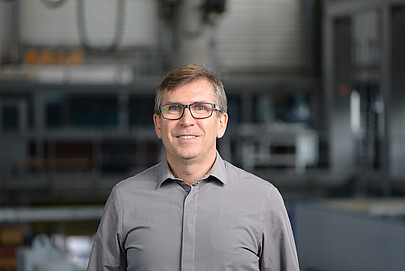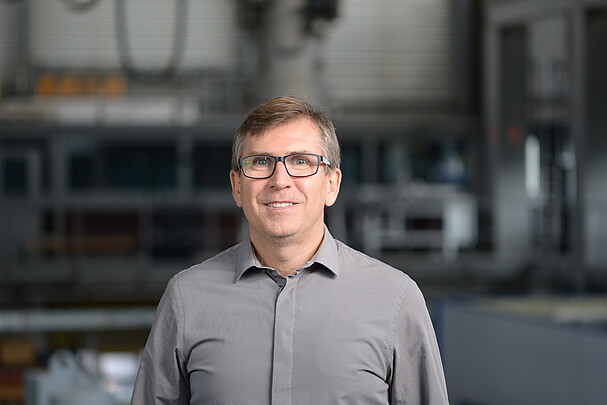Technical Data
Electron beam source
- max. high voltage 175 kV
- max. beam current 140mA
- max. wire speed 10 m/min


30823 Garbsen


Electron beam welding in an atmosphere (NVEBW, non-vacuum electron beam welding) was developed in Germany around 40 years ago. Over the decades, this highly efficient and fast welding process has successfully established itself in the USA in the automotive industry for use in large series.
The NVEB system at the IW is used for research in the fields of welding (NVEB welding), thermal cutting (NVEB cutting) and additive manufacturing (NVEB additive manufacturing). The system has two operating modes: 175 kV and 60 kV and achieves outputs of up to 24.5 kW and 8.4 kW respectively with a maximum beam current of 140 mA. The focused electron beam has a high energy density, which makes it ideal for working with materials with high thermal conductivity such as copper and aluminum. The low heat-affected zone minimizes distortion in thin sheets.
Electron beam welding in an atmosphere (NVEBW, non-vacuum electron beam welding) was developed in Germany around 40 years ago. Over the decades, this highly efficient and fast welding process has successfully established itself in the USA in the automotive industry for use in large series.
The NVEB system at the IW is used for research in the fields of welding (NVEB welding), thermal cutting (NVEB cutting) and additive manufacturing (NVEB additive manufacturing). The system has two operating modes: 175 kV and 60 kV and achieves outputs of up to 24.5 kW and 8.4 kW respectively with a maximum beam current of 140 mA. The focused electron beam has a high energy density, which makes it ideal for working with materials with high thermal conductivity such as copper and aluminum. The low heat-affected zone minimizes distortion in thin sheets.


